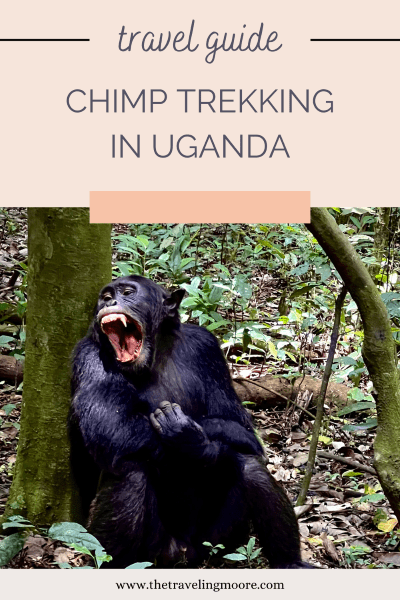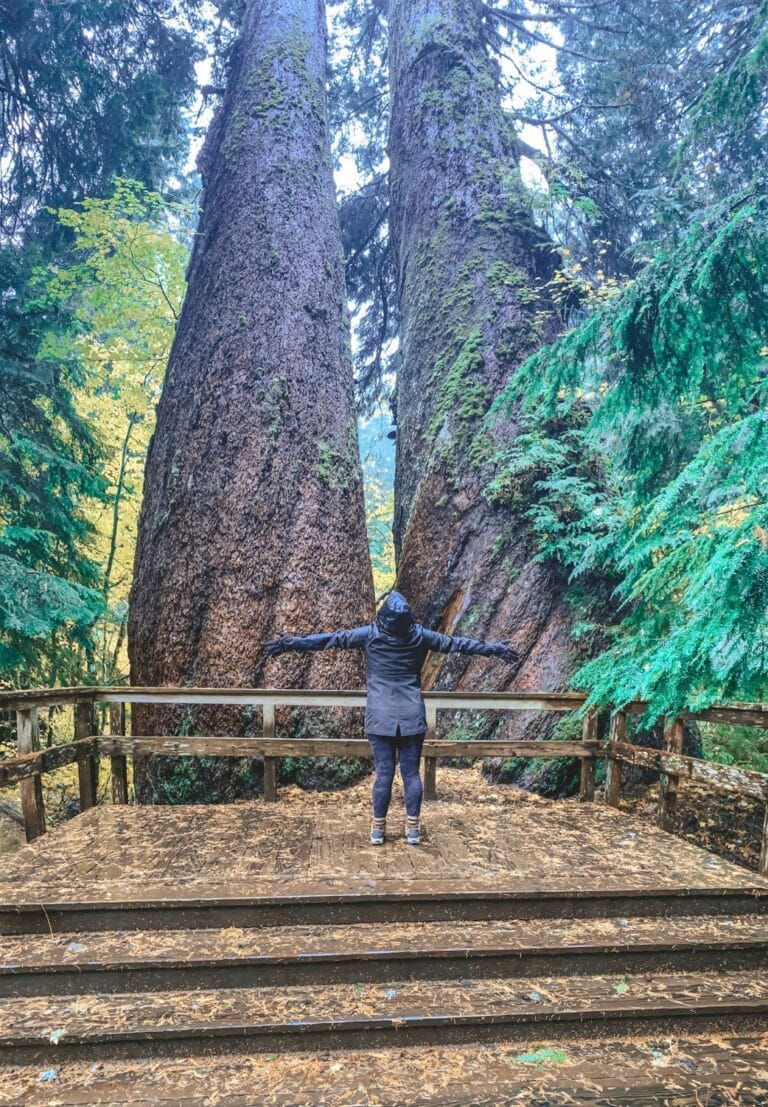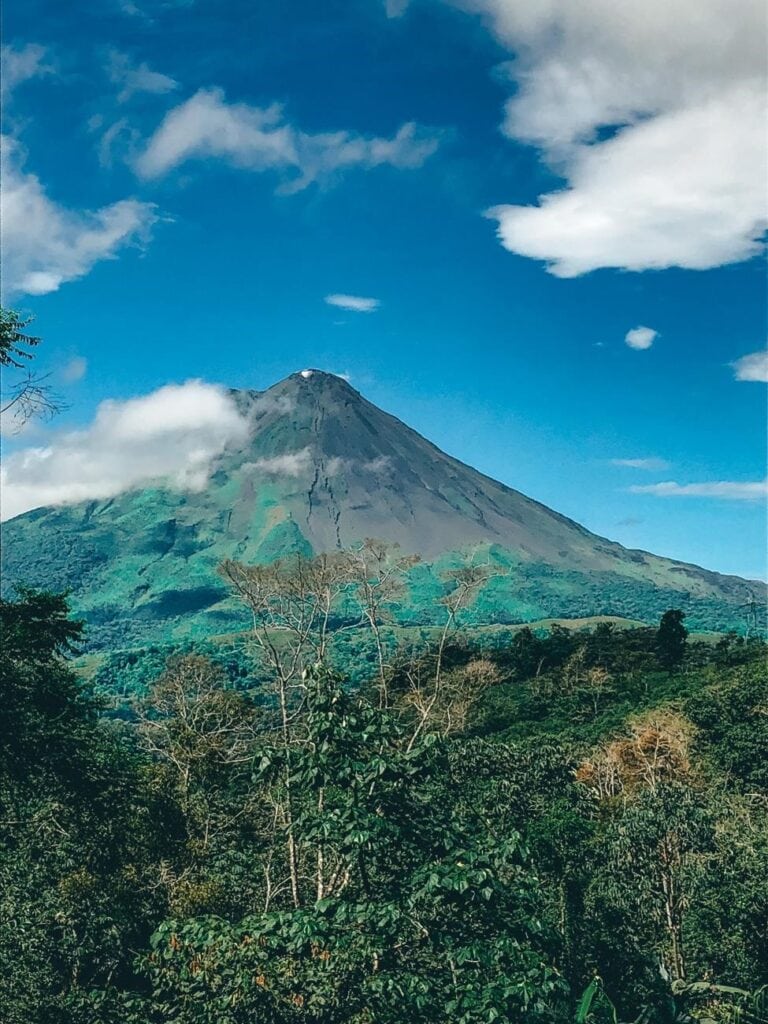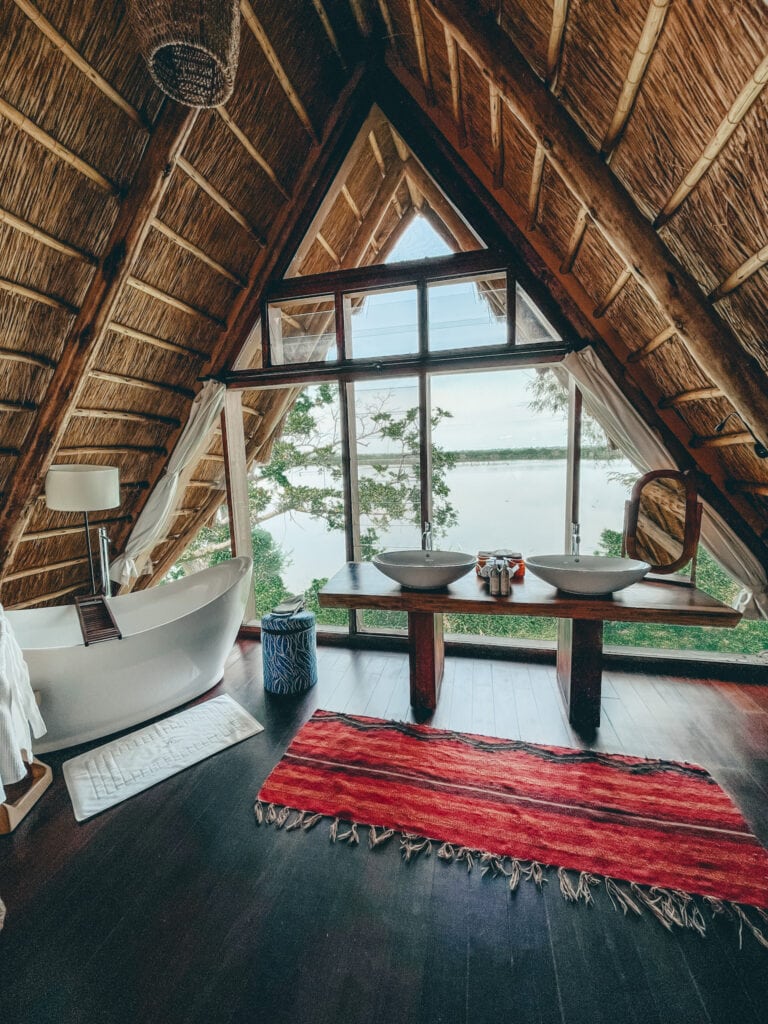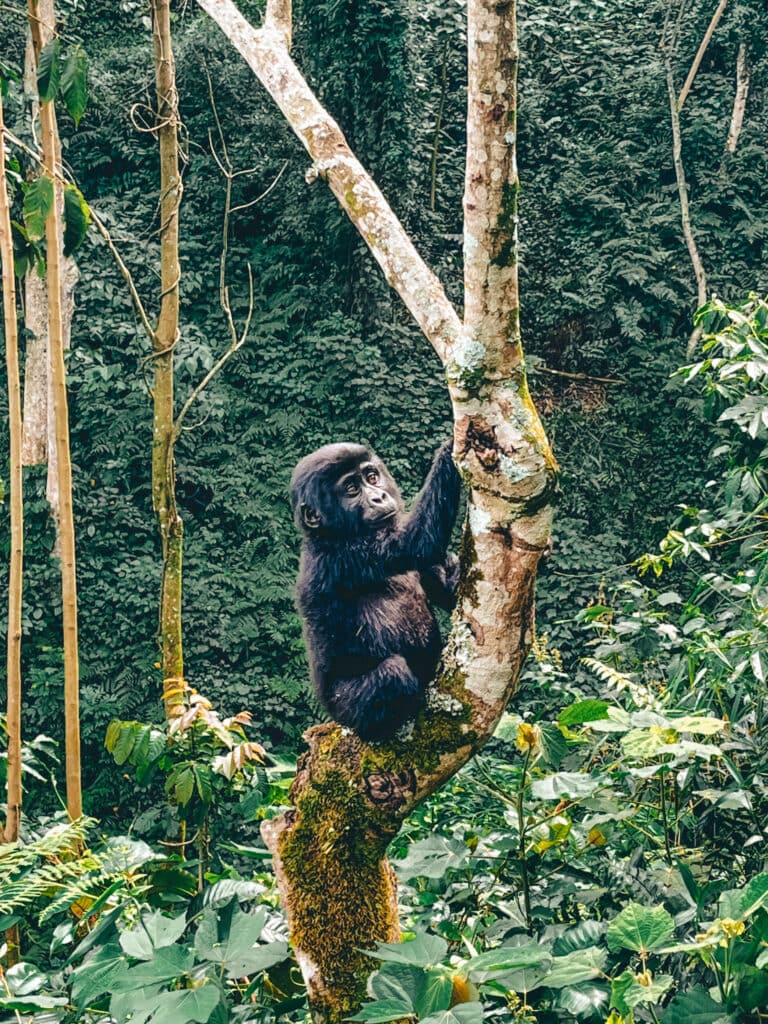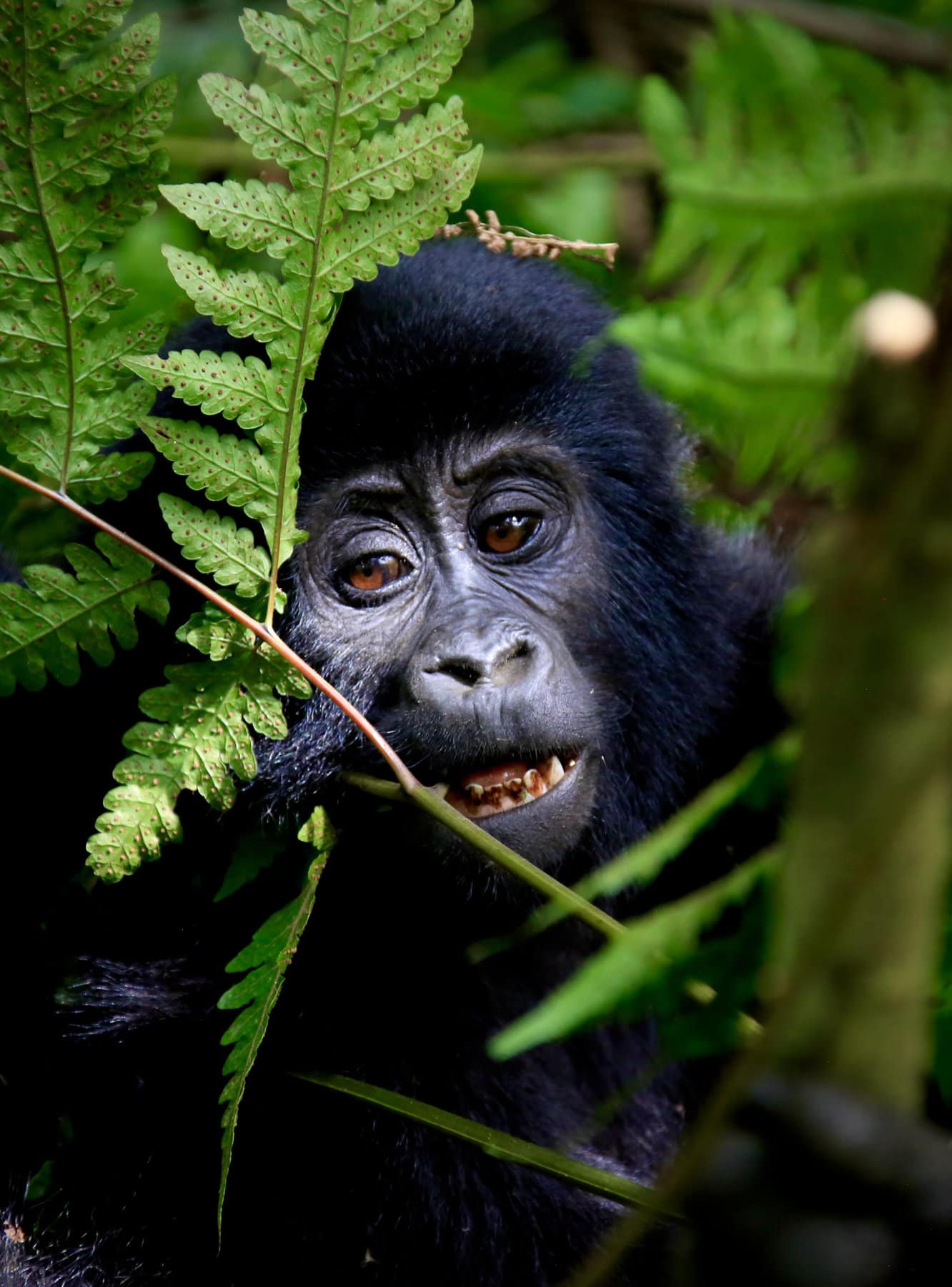Guide to Chimpanzee Trekking in Uganda: What to Expect
The main reason people visit Uganda is to see Mountain Gorillas in the wild. That is an incredible, life changing, experience. However, chimpanzee trekking in Uganda is also a bucket-list activity that you must include in your visit.
I recently spent ten days in Uganda, splitting the time between safari, trekking to chimps, and trekking to gorillas.
This guide to chimpanzee trekking in Uganda will explain all the details including what to expect, how to plan, and other helpful tips.
Some links on this blog are affiliate links, meaning I may earn a commission at no extra cost to you if you make a purchase through them. All opinions are my own, and I only recommend products and services I personally use and believe in. Thanks for your support!
Where to Go Chimpanzee Trekking
There are very few places in the world where you can go chimpanzee trekking. While there are a few locations in Tanzania, the best place in the world for chimpanzee trekking is Kibale national park in Uganda.
Kibale is a national park in western Uganda, near the city of Fort Portal. The primary attraction in this area is chimpanzee trekking, but there are also many primate species, elephants, birds, and other wildlife.
Getting to Kibale National Park
When traveling to Uganda, you will likely fly into the international airport in Entebbe (EBB). From there, the best way to get to Kibale is on a small bush plane to the regional airport in the town of Kasese. Aerolink is one of the local airlines offering commercial or chart flights within the country.
From Kasese, it is an approximately two-hour drive to Kibale. The drive is split between a paved road and dirt roads. The dirt roads can be very bumpy, with a lot of potholes, so be prepared for an uncomfortable ride.
To arrange transportation from the airstrip, I recommend working with your accommodation to schedule a driver.
When you depart Kibale, you will likely follow this same process in reverse.
Where to Stay Near Kibale National Park in Uganda
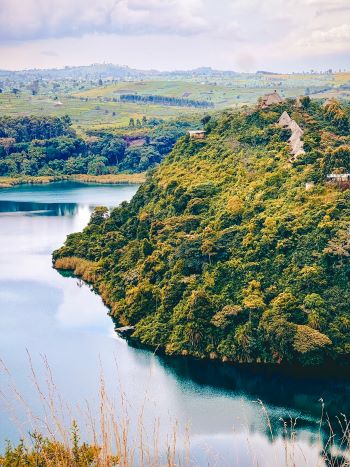
The best place to stay near Kibale National Park is the Kyaninga lodge. It is around two hours from the national park, but it’s worth the extra drive. The Kyaninga lodge is a luxury tree-house resort perched on the edge of a large crater lake.
Each room is a standalone log cabin, with a large deck overlooking the lake. It’s the perfect mix of rustic and luxurious.
With the large windows, and wood walls, you will feel in touch with nature. However, the hot water, luxury linens, clawfoot bathtub, and amazing service will ensure you are comfortable throughout the stay.
At the lodge, you will be served a hot breakfast, lunch, and dinner. With the latter two being three course meals. In addition, they have a pool, lake access with boats and paddle boards, and a guided walk around the crater.
Typical Day of Chimpanzee Trekking in Uganda
Arrival
A Day of chimpanzee trekking begins at the visitor center around 8 am. You will need to leave your hotel early enough to arrive on time. At the visitor center, the lead guide will provide a quick orientation and safety briefing.
After the briefing, everyone will be divided into groups of 4-12 people, paired with a guide. If you are traveling with a tour group or family, you will be grouped together.
Trekking

Each day, up to 10 groups will set out on the trek. Some groups will start from the visitor center and others will be driven to a starting point.
Following the direction of the guides, groups will set out into the forest. The guides anticipate the location of the chimps based on where they were last seen the day before.
The hiking will begin on the path, but you will likely go off-path as you get closer to the chimps. Off-path, you will be breaking through bush, climbing over trees, and going through mud.
Once one of the groups locates the chimps, their guide will communicate with the other guides and direct the groups where to go.
Once you arrive at the chimps, there is about one hour that you get to spend viewing and taking photos. You must stay around ten feet from the animals but are free to take as many photos and videos as you want.
The number of chimpanzees you see will depend on the day but can range from one chimpanzee to twenty. Some of the behaviors you can expect to see are the chimps eating, climbing trees, sleeping, and cleaning each other.
Following the hour with the chimps, you will hike back to the visitor center for a completion certificate, then return to your hotel.
Training for Chimpanzee Trekking
Prior to your trip, it is important to assess your physical fitness and prepare for the hike. A day of chimpanzee trekking can range in difficulty and length depending on the time it takes to locate the animals.
On average, expect to walk three miles with around 800 feet of elevation gain. The hike may be easier or harder, but if you prepare for those stats, you should be ok.
If you are an active person and frequently go on walks, hikes, or go to the gym, you should be prepared. If you want to train a bit extra, I recommend walking on an incline at the gym or on trails. The stair stepper machine is also a great way to prepare.
If you are planning to trek with gorillas in addition to the chimps, be aware that the gorilla trek is significantly more difficult.
Is Chimpanzee Trekking Safe?
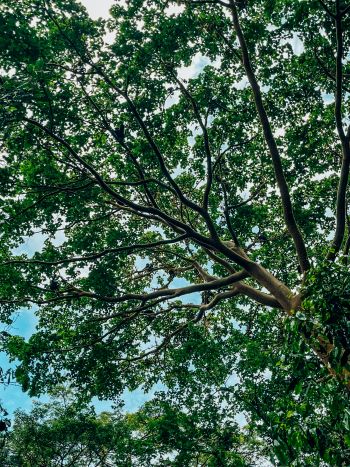
One of my biggest concerns before the trip was safety. I’ve seen too many headlines of chimpanzees attacking people in zoos or as pets. While the chimps you will see are wild, there are many safety precautions put in place to make it an overall low-risk activity.
All of the chimpanzees you visit will be habituated. Habituation means the chimps are exposed to humans over a series of months to get them used to us being around. The habituation process begins with guides spending a few hours per day with the chimp families.
From there, they begin introducing tourist groups for practice. By the time the trekking groups visit, the chimpanzees have seen humans every day for quite a while.
The second safety precaution is having one guide per group. The guides spend every day with the chimps, learning their behaviors and mannerisms. Based on the chimp’s body language, the guide will direct the group to give them more space or even leave.
Finally, the chimps view humans as larger primates. They (incorrectly) assume that since we are much taller than them, we are also stronger.
Overall, I felt safe throughout the entire process and believe that with the correct precautions, it can be a safe experience for everyone.
What to Wear
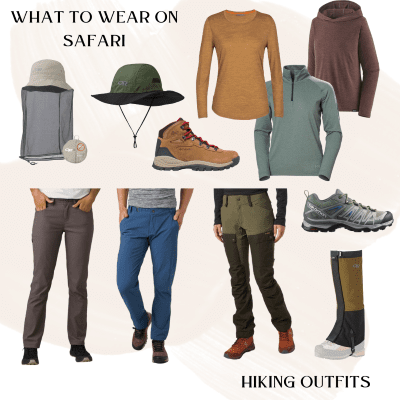
The above collage shows what to wear hiking in Uganda. It’s important to prepare with the correct gear to protect yourself during the hike.
1. The first important item is a good pair of hiking boots, these will protect your feet and ankles on unstable terrain.
2. The next item I recommend is ankle gaiters, these will protect your legs from the brush and from safari ants, stinging ants that love to climb into pants.
3. Finally, bring a hat to protect your face and head from branches and mosquitos.
Chimp Trekking Itinerary
To get the most out of your chimpanzee trekking experience, I recommend spending two nights and one full day at Kibale. This will allow you to have a complete day of trekking, without any flights to coordinate.
There is a small chance you will trek all day and never see the chimps, but this is very rare. If this concerns you, opt to spend two full days in Kibale.
From Kibale, I recommend continuing onto Bwindi for a couple days of gorilla trekking. After your chimp trekking, you will have good practice for the harder gorilla experience.
Summary of Chimpanzee Trekking in Uganda
If you are planning to visit Uganda, be sure to spend at least one day in Kibale for chimpanzee trekking. It’s a once in a lifetime experience that I guarantee will be incredible. It’s truly amazing and humbling to interact with these amazing creatures in the world.
For more details on planning a trip to Uganda, check out my travel guide and 10-day itinerary.
Related Posts:
- Planning A Trip To Uganda | Complete Uganda Travel Blog
- Ultimate Uganda Packing List – What To Wear In Uganda On Safari
- Three Day Gorilla Trekking Uganda Itinerary And Adventure Guide
- The Best Luxury Lodges In Uganda – Where To Stay In Uganda On Safari
Pin for Later:
